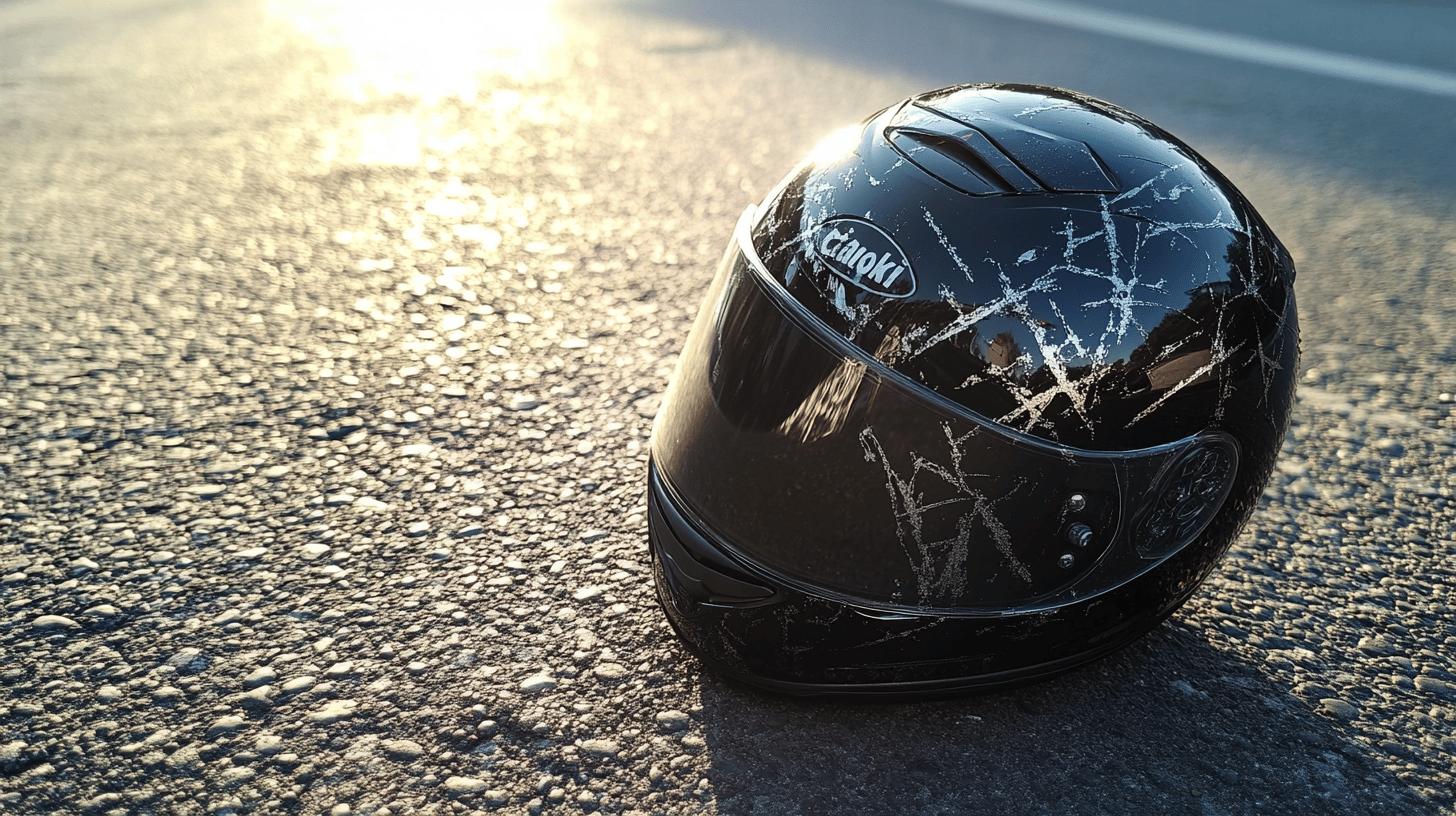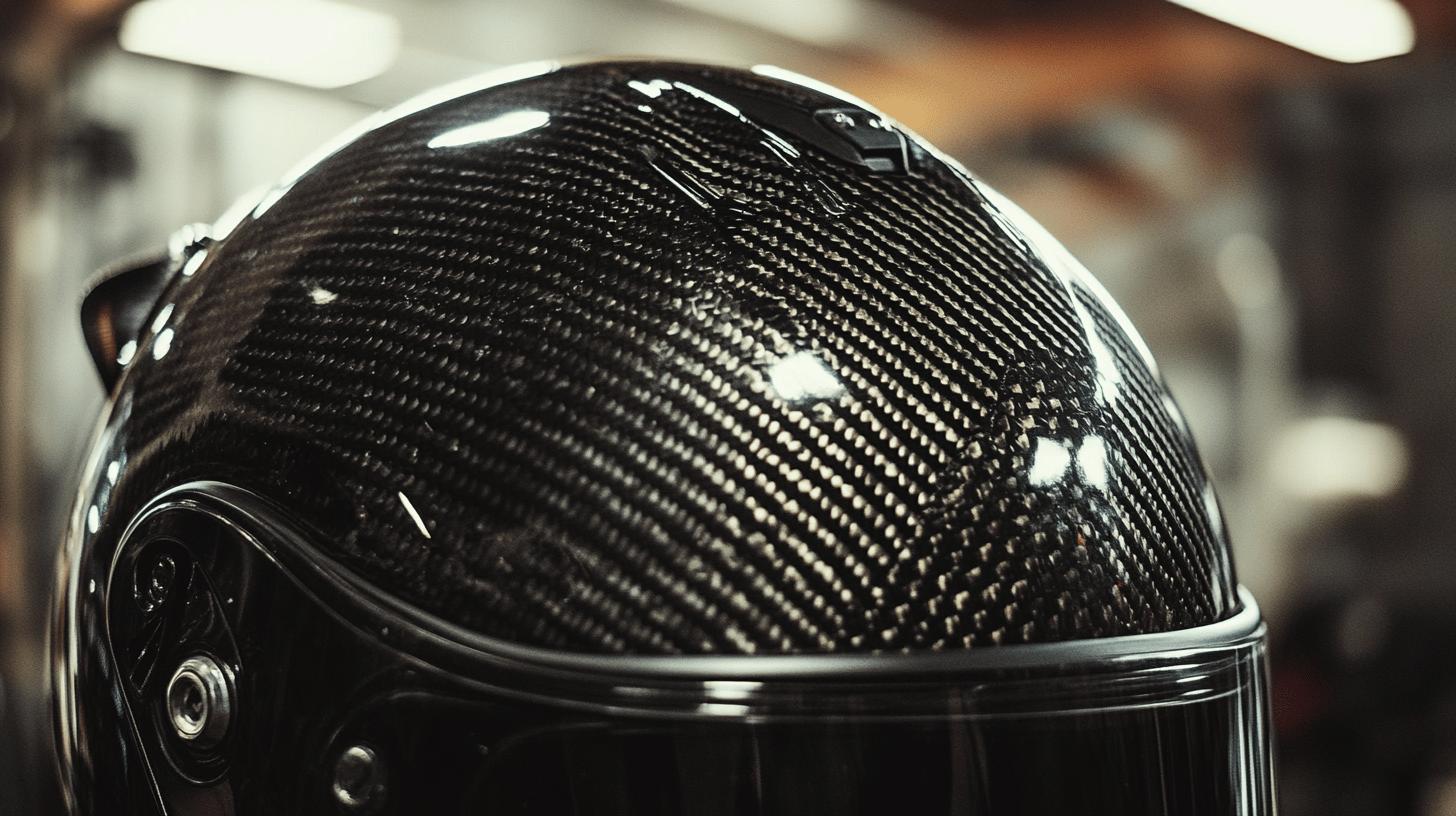Imagine riding on an open highway, wind rushing past as you revel in the freedom of the road—until disaster strikes. How confident are you in the strength of your helmet to protect your most vital asset, your head?
Many riders underestimate the lifesaving capabilities of a motorcycle helmet, yet helmet durability is essential for crash protection and head injury prevention. Understanding how strong motorcycle helmets truly are can mean the difference between life and death.
This article dives into what makes these protective shields indispensable, breaking down their strength, construction, and safety standards.
Understanding the Strength of Motorcycle Helmets

How strong are motorcycle helmets proven to be? Motorcycle helmets are indispensable in preventing severe injuries and fatalities in accidents, with full-face helmets providing the most extensive protection against traumatic brain injuries.
The strength of a helmet is gauged by its ability to absorb impact and shield the rider's head during collisions. These helmets are designed to minimize head injuries, which are a leading cause of fatality in motorcycle accidents. In the United States, 47 states require helmets to meet Department of Transportation (DOT) standards, underscoring their critical role in safety measures.
Factors contributing to helmet strength include:
-
Material: High-quality materials such as carbon fiber, fiberglass, and polycarbonate enhance durability and impact resistance.
-
Construction: The engineering of the outer shell and inner liners helps dissipate impact forces and prevent penetration.
-
Certification: Helmets certified by standards like DOT, ECE, or Snell have undergone rigorous testing to ensure they meet safety criteria.
-
Fit: Proper fitting helmets ensure that impact forces are distributed evenly, reducing the risk of injury.
-
Design: Aerodynamic designs reduce wind resistance, improving stability and comfort, which indirectly enhances safety.
Helmet strength significantly impacts overall rider safety by providing the primary line of defense against severe head injuries. Strong helmets can absorb and disperse the energy from an impact, reducing the force transmitted to the skull and brain.
This capability not only helps in preventing concussions and skull fractures but also improves survival rates in serious crashes. Riders are encouraged to choose helmets that meet or exceed safety standards to maximize protection on the road.
Materials and Construction of Motorcycle Helmets

How do motorcycle helmet materials contribute to their strength? The choice of materials in helmet construction plays a pivotal role in determining the helmet’s ability to protect a rider during an impact.
High-quality materials enhance the durability and impact resistance of helmets, making them more effective in preventing head injuries. The outer shell must be robust to absorb and deflect impacts, while the inner liners need to cushion and distribute the force to minimize injury.
Selecting the right materials ensures that helmets provide maximum protection while maintaining comfort and functionality.
Carbon fiber, fiberglass, and polystyrene are among the most common materials used in helmet construction. Carbon fiber helmets are lightweight and offer remarkable strength, making them ideal for riders seeking helmets that won’t compromise on safety or comfort. However, the high cost of carbon fiber can be a drawback for budget-conscious riders.
Fiberglass shells provide a good balance between strength and flexibility, allowing them to absorb impacts effectively. They are generally more affordable than carbon fiber helmets but may weigh slightly more.
Polystyrene liners are crucial for impact absorption. These liners compress upon impact, reducing the force transmitted to the rider’s head. While they are effective, the liners must be replaced after a significant impact to maintain protection levels.
| Material | Durability | Weight |
|---|---|---|
| Carbon Fiber | High | Lightweight |
| Fiberglass | Moderate | Moderate |
| Polystyrene | High (liner) | Lightweight |
Understanding the properties of these materials and how they interact within a helmet's design is essential for choosing a helmet that offers optimal protection. The combination of a strong outer shell and an effective liner ensures that helmets can withstand various types of impacts, ultimately enhancing rider safety on the road.
Helmet Safety Standards and Certifications

Safety standards are critical in the selection of motorcycle helmets. How do safety standards affect helmet choice? Safety standards ensure that helmets can withstand specific impact levels and protect riders in crash scenarios. Helmets certified by standards such as DOT, ECE, and Snell have undergone rigorous testing to verify their ability to absorb and disperse impact forces.
These standards provide a benchmark for assessing a helmet's protective capabilities, helping riders make informed choices about their safety gear. Full-face helmets generally meet higher safety standards due to their comprehensive coverage, offering superior protection compared to other helmet types.
What are the differences between DOT, ECE, and Snell ratings? The DOT certification is a mandatory standard in the United States, assessing helmets for their ability to absorb impact and withstand penetration. ECE standards, commonly used in Europe, involve more comprehensive testing, including impact assessments at various points and environmental testing.
Snell ratings are voluntary but considered the most stringent, involving rigorous impact testing and helmet retention assessments. Each certification emphasizes different aspects of helmet safety, with Snell-rated helmets often surpassing both DOT and ECE in protective performance.
Importance of Certification
Why is certification important for rider safety? Certification ensures that helmets meet established safety benchmarks, providing riders with confidence in their gear’s protective qualities. Certified helmets have been tested to withstand specific impact scenarios, reducing the risk of catastrophic head injuries in accidents.
Riders should prioritize helmets that carry reputable certifications, ensuring that their headgear not only complies with legal standards but also offers the highest level of protection available.
Testing and Measuring Helmet Impact Resistance

How is helmet impact resistance tested? Helmets are subjected to rigorous testing to gauge their ability to withstand impacts and protect riders in collisions. These tests are critical as they simulate real-world crash scenarios, assessing the helmet's capacity to absorb and dissipate impact forces.
By replicating various accident conditions, manufacturers can ensure that helmets meet safety standards and provide the necessary protection to prevent head injuries.
What specific tests are conducted to assess helmet strength? Key tests include drop tests, where helmets are dropped from specific heights onto anvils to evaluate their impact absorption capabilities. Penetration resistance tests involve striking the helmet with a sharp object to ensure the outer shell can withstand piercing forces.
These tests are designed to mimic the types of forces a helmet might encounter during an accident, ensuring that it can protect the rider's head effectively. The results from these tests are crucial for certifying helmets under various safety standards like DOT, ECE, and Snell.
How do test results impact helmet design and rider confidence? The insights gained from impact resistance tests guide manufacturers in refining helmet designs and material selection. By understanding how helmets perform under different conditions, manufacturers can enhance their products to offer better protection.
This continuous improvement fosters rider confidence, knowing that their helmets have been tested to withstand significant impacts and provide essential protection during rides. Riders are encouraged to choose helmets that have passed stringent testing to maximize their safety on the road.
Comparing Different Types of Motorcycle Helmets

Why are full-face helmets considered the safest option? Full-face helmets deliver the most comprehensive protection by covering the entire head and face, including the crucial chin and jaw areas. These helmets are specifically designed to absorb and distribute impact forces, significantly lowering the risk of head injuries during accidents.
With the chin bar playing a vital role in absorbing impacts, full-face helmets are proven to be 45.3% safer than other helmet types. This design makes them particularly effective in preventing traumatic brain injuries, offering unmatched safety for riders who prioritize protection over other factors.
How do modular and open-face helmets compare in terms of safety and functionality? Modular helmets offer the convenience of a flip-up front section, allowing riders to switch between full and open-face modes.
However, they generally fall short of the stringent safety criteria required for Snell certification, limiting their protective performance. On the other hand, open-face helmets provide enhanced visibility and ease of communication, features that are highly valued by riders who prioritize these aspects over full protection.
Yet, they offer significantly less protection than full-face helmets, particularly in the chin and jaw areas, which remain exposed. Each helmet type has its benefits, but riders need to assess their priorities when choosing between versatility and safety.
What makes off-road helmets suitable for rugged conditions? Off-road helmets are crafted for demanding terrains, focusing on durability and ventilation. They often feature extended visors to shield against debris and a design that facilitates airflow, keeping riders cool during strenuous rides.
While they offer substantial protection in off-road scenarios, they may not provide the same level of impact resistance as full-face helmets designed for street use. Off-road helmets are ideal for riders engaging in motocross or trail riding, where different protective needs are prioritized.
Choosing the Right Helmet for Your Ride
How should riders choose a helmet based on their riding style? Selecting the appropriate helmet involves considering the type of riding, environmental conditions, and personal preferences. Street riders who require maximum protection should opt for full-face helmets, whereas those who value flexibility might consider modular options.
Riders in urban settings may prefer open-face helmets for better visibility and communication. For those who frequently ride off-road, helmets designed for rugged conditions are recommended. Evaluating the trade-offs between protection, comfort, and functionality will guide riders in choosing the best helmet for their specific needs.
Final Words
Exploring how strong are motorcycle helmets reveals their critical role in reducing head injuries. Key factors include helmet materials, construction techniques, and safety certifications, which collectively enhance crash protection.
Testing methods ensure that helmets meet rigorous impact resistance standards, providing peace of mind for riders. Whether opting for full-face, modular, or off-road helmets, understanding these elements aids in making informed choices, enhancing both safety and the riding experience. Embrace the open road with confidence, backed by reliable protection.
FAQ
How strong are motorcycle helmets?
Motorcycle helmets are designed to absorb significant impact forces during accidents, protecting against traumatic brain injuries. The strength of a helmet ensures rider safety by effectively distributing and reducing crash impact forces.
How durable is a motorcycle helmet?
Motorcycle helmets are constructed with durable materials like carbon fiber and fiberglass, enhancing their impact resistance. Durability ensures that helmets can withstand forces from road accidents, providing long-term protection.
How much force can a motorcycle helmet withstand?
A motorcycle helmet can withstand impact forces typically up to 100 to 150 joules in testing scenarios. The strength varies with design and materials, but it's engineered to manage significant crash stresses.
Can a motorcycle helmet stop a bullet?
Motorcycle helmets are not designed to stop bullets. They provide protection against impacts in road accidents but lack the materials and construction needed to resist a bullet's force and penetration.
Can a helmet withstand a car collision?
Helmets are crafted to mitigate impact forces from falls or moderate-speed crashes. While they cannot withstand the full force of a high-speed car collision, they significantly reduce injury risks in typical motorcycle accidents.
What are Shoei and AGV helmets known for?
Shoei and AGV helmets are renowned for their high-quality materials and advanced safety features. Both brands offer helmets that often meet or exceed safety certifications, delivering superior protection and comfort for riders.
How do helmet safety standards and certifications work?
Helmets are assessed by standards like DOT, ECE, and Snell through rigorous criteria. These certifications guarantee that helmets meet essential safety benchmarks, aiding consumers in selecting reliable protective gear.

Mark Anderson is a trusted expert with over 25 years of riding experience. At 56, his deep knowledge of long-distance touring and participation in major motorcycle rallies makes him a reliable source for gear recommendations on ProtectiveGearz. Mark’s decades of firsthand experience ensure his advice is authoritative and valuable to riders seeking expert guidance.



